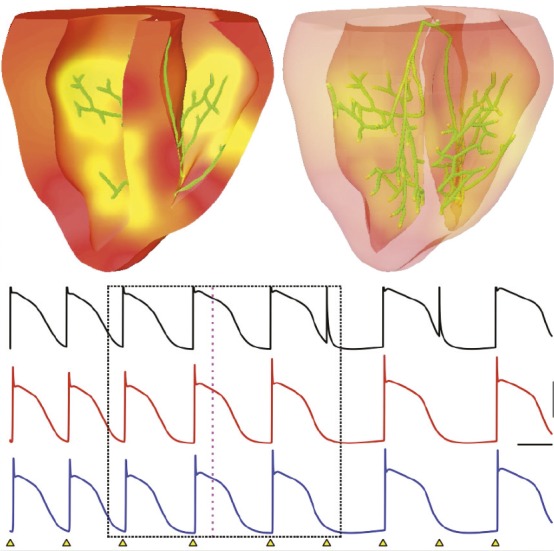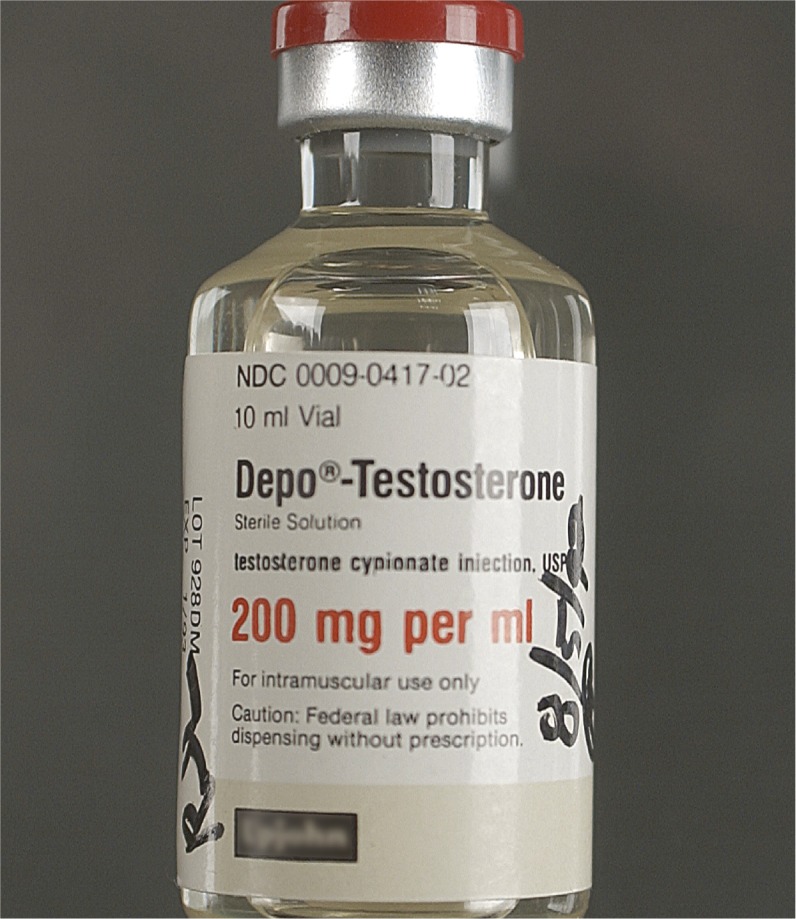Vaccine protects mice against chemotherapy-induced lung infection

Preventing chemotherapy-induced infections. Image courtesy of iStockphoto/Alexei Cruglicov.
Chemotherapy drugs can kill infection-fighting white blood cells called neutrophils in the bone marrows of cancer patients, raising the risk of life-threatening infections. Akinobu Kamei et al. (pp. E6153–E6161) tested whether a live attenuated vaccine against Pseudomonas aeruginosa protects mice treated with the chemotherapy drug cyclophosphamide against bacterial pneumonia. Compared with unvaccinated mice, mice that were administered three weekly intranasal doses of the vaccine exhibited significantly reduced bacterial load in the lungs following exposure to P. aeruginosa and three doses of cyclophosphamide—despite patent chemotherapy-induced depletion of neutrophils. Further experiments revealed that the vaccine triggers the expansion of a previously unreported group of activated lung macrophages that survive chemotherapy and confer protection against pneumonia. When the authors purified the vaccine-induced macrophages and transferred them into the tracheas of unvaccinated mice exposed to cyclophosphamide and P. aeruginosa, the cells prolonged the survival of the neutrophil-depleted mice. Further, T cells, but not antibodies, contributed to vaccine-induced protection against the bacterial pathogen. The findings unearth a reserve of lung immune cells that could be activated by vaccination to confer protection against chemotherapy-induced bone marrow damage and infections. According to the authors, pinpointing the macrophage-boosting components of the vaccine could pave the way toward a safe and effective candidate vaccine against lung infection in immune-compromised cancer patients. — P.N.
Red fluorescence from blue fish pigment

Papaonga Lake, Canada, where blue walleye were discovered. Image courtesy of Wayne Schaefer (University of Wisconsin–Washington County, West Bend, WI).
Sandercyanin is a blue pigment found in the skin mucus of blue walleye, a North American sport fish. The pigment consists of a protein noncovalently bound to biliverdin IXα (BLA), a product of UV-induced heme breakdown. Walleye are normally yellow in color, and Sandercyanin production appears to correlate with UV radiation levels. UV-induced pigment production is thought to protect walleye from further UV radiation damage. Swagatha Ghosh et al. (pp. 11513–11518) found that Sandercyanin emits bright red fluorescence when excited with UV light. The difference between the excitation wavelength, 375 nm, and the emission wavelength, 630 nm, is one of the largest spectral shifts observed among fluorescent proteins. Free BLA in water emits fluorescence at 450 nm, but shifts to longer wavelengths with increasing solvent hydrophobicity and viscosity. The crystal structure of Sandercyanin revealed BLA bound in a hydrophobic pocket in the protein and forming numerous water-mediated hydrogen bonds and stacking interactions with the protein. The authors suggest that these protein–BLA interactions produce the large spectral shift by dissipating much of the energy absorbed by BLA upon excitation. According to the authors, the unique fluorescence properties of Sandercyanin support its proposed role in protecting against UV radiation, and suggest that Sandercyanin might be engineered for use as a red fluorescent protein marker. — B.D.
European malaria DNA from antique slides

Two of the slides from the Ebro Delta in Spain used to retrieve genetic data from European malaria parasites.
The evolutionary histories of Plasmodium vivax and Plasmodium falciparum, the predominant malaria-causing parasites, remain controversial, partly because of the lack of genetic evidence from European strains of the parasites, which were eradicated more than 50 years ago. Pere Gelabert et al. (pp. 11495–11500) retrieved genetic data for the European strains from old microscopy slides. The slides, dating from the 1940s, contained blood drops from three malaria patients who had lived in the Ebro Delta in Spain. The authors extracted sufficient mitochondrial DNA (mtDNA) to reconstruct 67% of the European P. vivax mitochondrial genome and the entire European P. falciparum genome. The European P. vivax sequence was found to be closely related to an mtDNA sequence commonly found in present-day Central and South American parasites, whereas the European P. falciparum shared an mtDNA sequence with present-day parasites from India. According to the authors, the results suggest that P. vivax was introduced to the Americas from Europe after Colombian contact, and comport with historical accounts suggesting that P. falciparum was introduced to Europe from India. Specimens from historical medical collections might be a valuable source of genetic data on extinct pathogens, according to the authors. — B.D.
High-resolution maps of DNA damage and repair

DNA damage and repair maps can unravel cancer sensitivity and resistance to drugs, such as cisplatin, represented as bullets targeting a cancer cell (globe). Image courtesy of Ayano Kakoki (University of North Carolina at Chapel Hill, Chapel Hill, NC).
The chemotherapy drug cisplatin destroys tumors by binding to cancer cell DNA and disrupting replication. However, some cancers develop a type of resistance through mechanisms that include the excision of damaged single-stranded oligomers from the genome and polymerization of new DNA to fill the gaps. To help investigate this mechanism, Jinchuan Hu et al. (pp. 11507–11512) present “Damage-seq” and “XR-seq,” methods that yield single-nucleotide resolution maps of cisplatin damage and repair for the human genome. Damage-seq identifies the precise location of DNA damage by exploiting the replication-blocking properties of base lesions. XR-seq reveals the removal of these lesions by capturing and sequencing the excised oligomer by-products that are released during DNA repair. Using the techniques, the authors demonstrate that cisplatin-induced DNA damage is uniformly distributed in the human genome with a frequency that comports with previously published low-resolution mapping studies, whereas the rate of repair is highly heterogeneous, influenced by functional and epigenetic factors. The findings demonstrate that Damage-seq and XR-seq can be combined to study cancer sensitivity and resistance to current drugs and potentially to develop new clinical treatment strategies, according to the authors. — T.J.
How heart cell mosaicism can cause arrhythmia

Electrical simulations of the heart.
Long-QT syndrome (LQTS) can result in life-threatening abnormal heart rhythms called arrhythmias. When undergoing commercial genetic testing for LQTS, almost a third of patients receive a negative test result, suggesting the presence of other undiscovered genetic variants associated with the disease. James Priest et al. (pp. 11555–11560) found a disease-causing genetic variation present only in a fraction of heart cells, a phenomenon called somatic mosaicism, in a premature infant with LQTS and arrhythmia. Using rapid genome sequencing, the authors identified a mutation in the 3-day-old infant. When examined in cellular experiments, the mutation altered the function of a sodium channel gene that causes LQTS. Unlike most previously reported LQTS cases, the mutation was present in the genomes of only 8% of the patient cells. To better understand how such a small fraction of abnormal heart cells could cause arrhythmia, the authors developed a computational model of heart electrophysiology that incorporated somatic mosaicism, and examined the prevalence of mosaicism in a population of 7,500 individuals genetically tested for arrhythmia. The authors found four individuals with mosaicism in a gene causing LQTS. The findings demonstrate how mosaicism in a small fraction of heart cells can cause LQTS and indicate that somatic mosaicism is a rare cause of genetic arrhythmias, according to the authors. — S.R.
Testosterone, aggression, and generosity in human males

Vial of injectable testosterone. Image courtesy of the US Drug Enforcement Administration.
The hormone testosterone is associated with aggression and antisocial behavior, but little evidence supports causal links in human males. Alternatively, testosterone is thought to promote status-enhancing behaviors that may be aggressive or nonaggressive. Jean-Claude Dreher et al. (pp. 11633–11638) tested the latter hypothesis in a double-blind, randomized study of 40 men ages 18 to 30. Participants were injected with either testosterone or placebo before playing a modified Ultimatum Game, in which one player, the proposer, offers to split a sum of money with a second player, the responder. Next, the responder decides whether to accept or reject the proposal. Study participants always played the role of the responder, and after accepting or rejecting a proposal were given the option of financially rewarding or punishing the proposer at a proportional cost to themselves. Participants who received testosterone were more likely than control participants to punish proposers who offered below-average amounts, and also to reward proposers who offered above-average amounts. According to the authors, testosterone might elicit prosocial behaviors, such as generosity, in males and promote status-enhancing male behaviors. — B.D.


